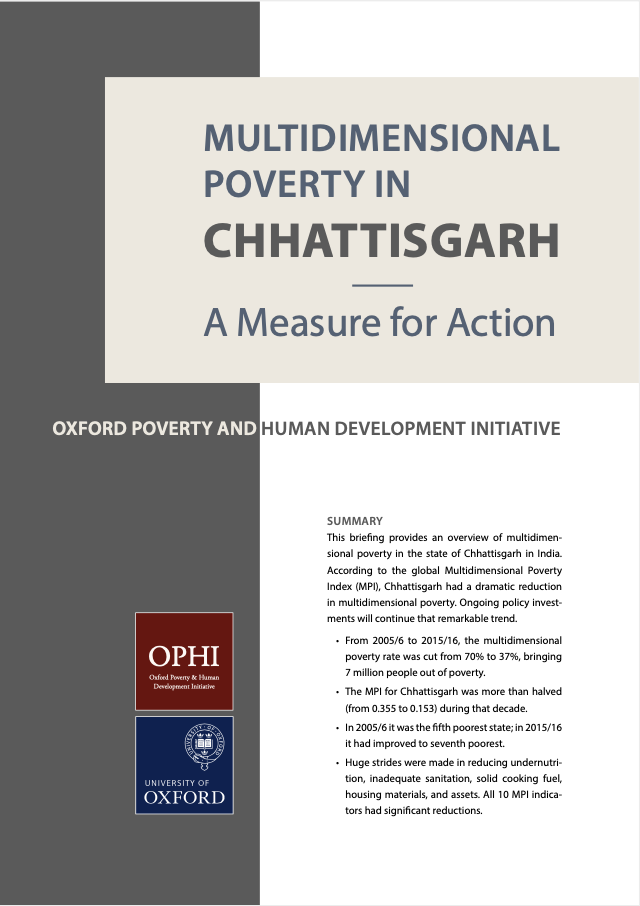Multidimensional Poverty in Chhattisgarh: A Measure for Action
Special Publications
This briefing provides an overview of multidimensional poverty in the state of Chhattisgarh in India. According to the global Multidimensional Poverty Index (MPI), Chhattisgarh had a dramatic reduction in multidimensional poverty. Ongoing policy investments will continue that remarkable trend.
- From 2005/6 to 2015/16, the multidimensional poverty rate was cut from 70% to 37%, bringing 7 million people out of poverty.
- The MPI for Chhattisgarh was more than halved (from 0.355 to 0.153) during that decade.
- In 2005/6 it was the fifth poorest state; in 2015/16 it had improved to seventh poorest.
- Huge strides were made in reducing undernutrition, inadequate sanitation, solid cooking fuel, housing materials, and assets. All 10 MPI indicators had significant reductions.
- The changes were pro-poorest. Those living in rural areas, children, and members of Scheduled Tribes are the poorest groups, and all these groups reduced MPI the fastest. They are not being left behind but are catching up.
- Yet in 2015/16, 37% of people – 11 million – were still MPI poor, and 93% of these live in rural areas and 5.1 million were members of Scheduled Tribes. One quarter of poor people are children under 10 years of age.
- District-level poverty varies. The poorest districts are Bastar, Narayanpur, and Dakshin Bastar Dantewada.
- Ending multidimensional poverty requires integrated investments in nutrition (especially for children), improved housing materials, clean energy, and adequate sanitation.
Citation: OPHI (2020). Multidimensional Poverty in Chhattisgarh: A Measure for Action, Oxford Poverty and Human Development Initiative (OPHI), University of Oxford.
Keywords:
poverty measurement, Multidimensional Poverty Index, MPI, global MPI
Region:
South Asia
Country:
India



